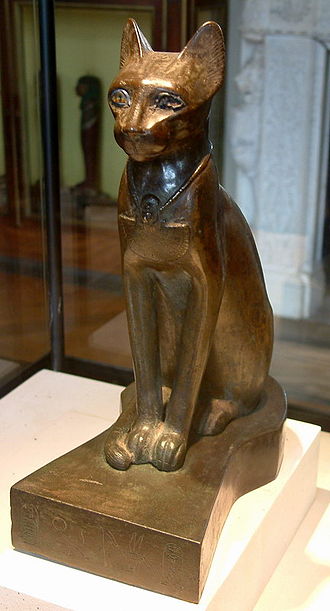
Source: Cats in ancient Egypt – Wikipedia, the free encyclopedia
Cats (Felis silvestris catus), known in Ancient Egypt as “Mau”, were considered sacred in ancient Egyptian society. Based on recent DNA comparisons of living species, it has been estimated that cats were firstdomesticated from the Middle Eastern subspecies of the Wildcat about 10,000 years ago in the Fertile Crescent.[1][2] Thousands of years later, the peoples in what would later be Upper and Lower Egypt had areligion centering around the worship of animals, including cats[citation needed].
Praised for controlling vermin and its ability to kill snakes such as cobras, the domesticated cat became a symbol of grace and poise. The goddess Mafdet, the deification of justice and execution, was a lion-headed goddess. The cat goddess Bast (also known as Bastet) eventually replaced Mafdet, and Bast’s image softened over time and she became the deity representing protection, fertility, and motherhood.
As a revered animal and one important to Egyptian society and religion, some cats received the same mummification after death as humans. Mummified cats were given in offering to Bast.[citation needed] In 1888, an Egyptian farmer uncovered a large tomb with mummified cats and kittens. This discovery outside the town of Beni Hasan had eighty thousand cat mummies, dated after 1000 BC.